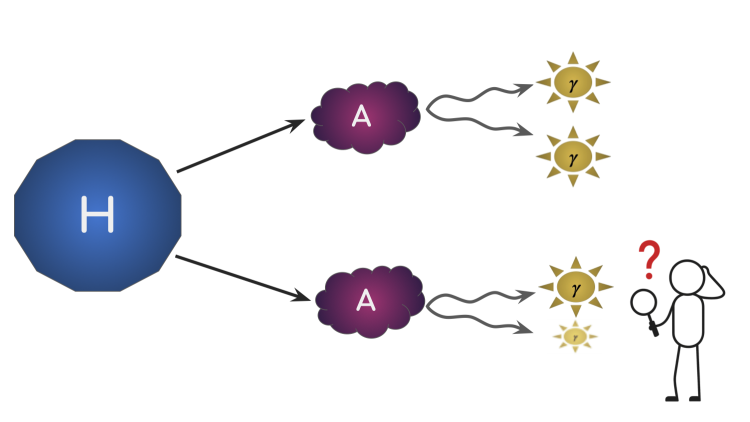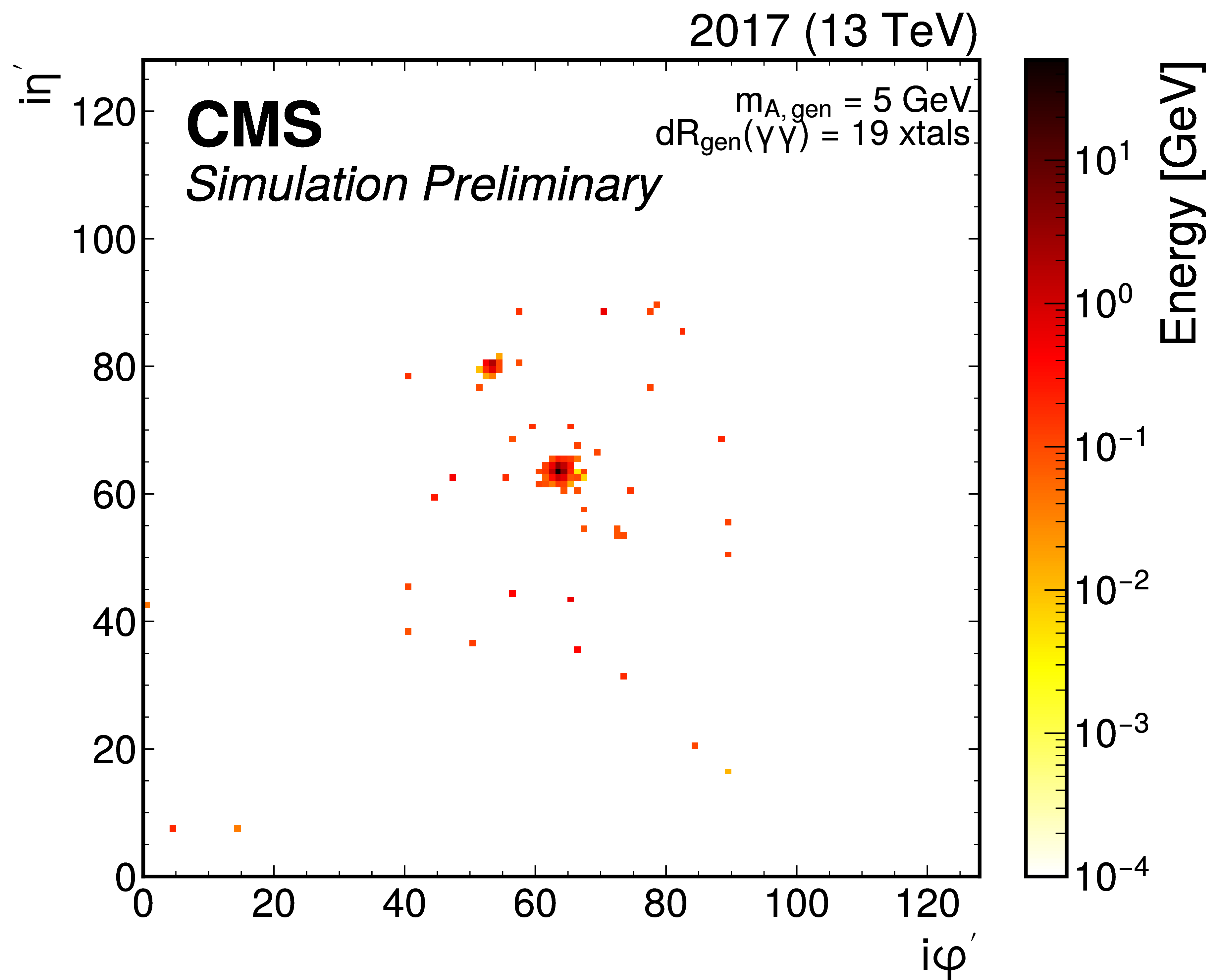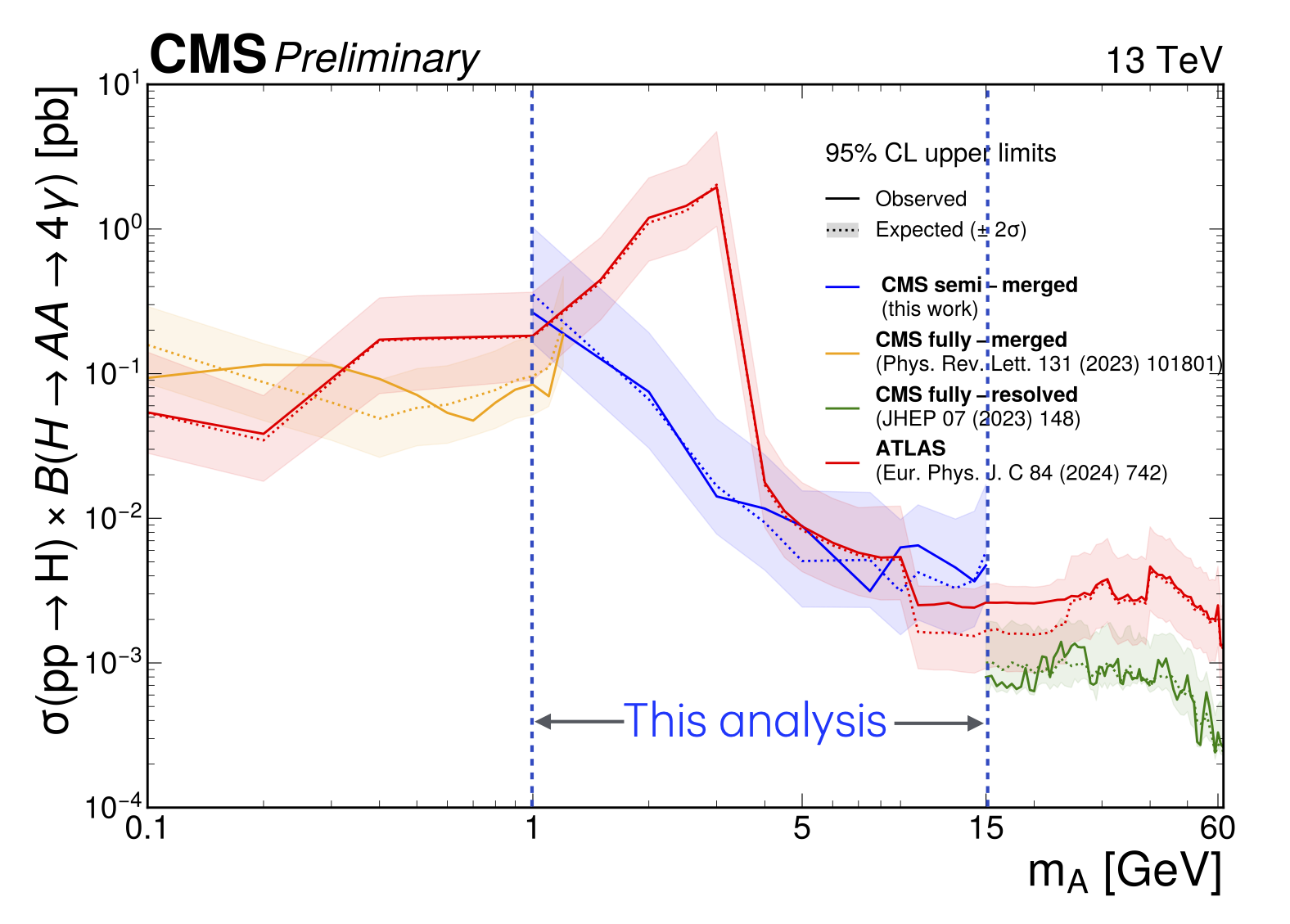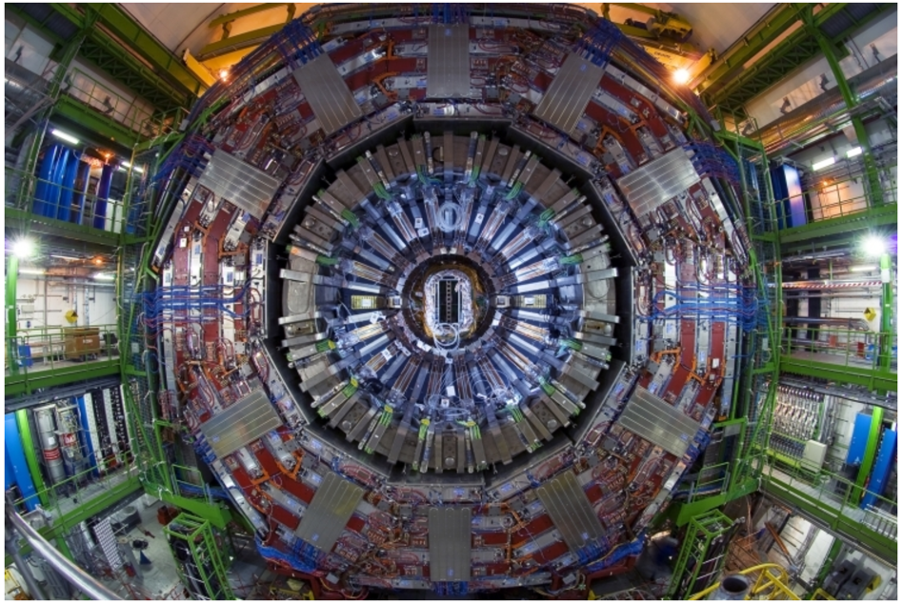
CMS breaks new ground by reconstructing challenging photon signatures using machine learning, opening new paths in the search for physics beyond the standard model.
What if a new exotic particle from a non-standard Higgs boson decay escaped detection — not from being invisible to the CMS experiment, but by being misinterpreted? In a new search for exotic Higgs boson decays, the CMS experiment tackles a uniquely tricky detector signature: one where only part of a particle’s energy is reconstructed, and the rest is hidden in subtle energy patterns.
The analysis targets a process in which the Higgs boson decays into two hypothetical lightweight particles (𝓐), each of which then decays into two photons: H → 𝓐𝓐 → 4γ. CMS has previously searched for these decays in cases where all four photons are either fully separated or each pair is completely overlapping. But this new study explores the semi-merged regime, where one photon pair is reconstructed cleanly, and the other evades standard detection.

Figure 1: Energy deposit map in the CMS ECAL from simulation of the decay H → 𝓐𝓐 → 4γ for an 𝓐 particle candidate with a mass of 5 GeV shown in relative ECAL coordinates, with the reconstructed primary photon candidate at the centre. The secondary photon is far away but is too low in energy to be reconstructed as a full photon. Each pixel in the image represents one crystal of the ECAL, which has a transverse size of 2.2 × 2.2 cm².
In this semi-merged final state, two distinct scenarios arise. In one, the two photons are very close together and truly merged; forming a single, broad electromagnetic shower. In the other, and often more challenging scenario, the photons are well separated, but the second photon is too low in energy to pass standard reconstruction thresholds, as shown in Fig 1. Either way, only one photon-like object is reconstructed, rendering the parent 𝓐 particle’s mass inaccessible to traditional diphoton reconstruction techniques.
“The key challenge is that the standard reconstruction tools are ineffective,” says Abhirami Harilal, a PhD candidate at Carnegie Mellon University, working on this analysis for her doctoral thesis. “We are left with one visible photon and some hidden traces of its partner. That’s where machine learning comes in.”
To extract the mass of the parent 𝓐 particle from these complex signatures, CMS developed a novel graph neural network (GNN) approach to regress the mass of the 𝓐 candidate. Trained on energy deposits in the electromagnetic calorimeter (ECAL), the network learns to identify patterns consistent with overlapping or incompletely reconstructed photons. This approach allows the network to bypass traditional reconstruction steps and operate directly on minimally processed detector inputs, unlocking new ways to recover signals that standard techniques often miss.
“The GNN gives us a robust solution that works directly with the detector’s crystal-level data and adapts seamlessly to these complex signatures”, says Shamik Ghosh, a researcher from Laboratoire Leprince-Ringuet (LLR), Paris.

Figure 2: Observed (solid line) and expected (dashed line) upper limits — including the ±2σ confidence interval around the expected limit (shaded areas) — from this CMS semi-merged search (blue) compared to the previous CMS (orange and green) and ATLAS (red) searches over the full m𝓐 range from 0.1 to 60 GeV
No excess above the standard model is observed, but this analysis sets the most stringent limits to date in the majority of the explored mass range between 1 GeV and 15 GeV in 𝓐 mass, as shown in Fig 2. This new result closes the gap between the previous CMS searches, thus extending the exclusion coverage across the full range of interest from 0.1 GeV to 60 GeV.
Beyond the new physics results that have just been presented at the 2025 EPS conference, the analysis highlights the evolving role of AI in particle physics. By interpreting fine-grained detector patterns, machine learning offers a powerful tool to reconstruct particles that don’t fit the mold, thus expanding our ability to search for new physics in unexpected places, which will be increasingly important in the future.
Written by: Abhirami Harilal, for the CMS Collaboration
Edited by: Andrés G. Delannoy
Read more about these results:
-
CMS Physics Analysis Summary (EXO-24-025): "Search for exotic Higgs boson decays H → AA with A → γγ in events with a partially merged topology in proton-proton collisions at √s = 13 TeV"
-
@CMSExperiment on social media: Bluesky - Facebook - Instagram - LinkedIn - TikTok - YouTube

